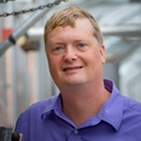Controlled Environment Horticulture: Latest Advances and Future Prospects
A special issue of Horticulturae (ISSN 2311-7524). This special issue belongs to the section "Protected Culture".
Deadline for manuscript submissions: closed (31 January 2024) | Viewed by 28769
Special Issue Editors
Interests: indoor vertical farming; hydroponics; aquaponics; LEDs; greenhouse production; phytochemicals
Interests: greenhouse production; hydroponics; indoor agriculture; phytonutrients
Interests: reducing energy use in CEA; LED lighting; climate control; mineral nutrition; new crops
Special Issues, Collections and Topics in MDPI journals
Special Issue Information
Dear Colleagues,
Rapid urbanization, increasing population, decreasing resources, and decreasing nutrition security are current global challenges. Controlled environment horticulture (CEH) has the potential to revolutionize our food systems by enhancing nutrition security, increasing local crop production, reducing food mileage, and minimizing resource use. CEH systems, including greenhouses, vertical farms and high tunnels, enable environmental parameters, including temperature, air, light (intensity, quality, and duration), and CO2, to be controlled, eliciting desired yield and quality responses in a predictable manner. These systems enable year-round production of fresh food, ornamental, and high-value crops. However, due to rising production costs, the following important areas for production improvement remain: high energy demand, labor (training and automation), improving climate control (using traditional and AI approaches), phytonutrient improvement and sustainability.
The goal of this Special Issue, entitled 'Controlled Environment Horticulture: Latest Advances and Future Prospects', is to highlight cutting-edge innovative research, climate-smart advanced technology, and cultural practices and concepts that could address these challenges and enhance the efficiency and sustainability of controlled environment horticulture.
Dr. Most Tahera Naznin
Dr. Kellie Walters
Prof. Dr. Neil Mattson
Guest Editors
Manuscript Submission Information
Manuscripts should be submitted online at www.mdpi.com by registering and logging in to this website. Once you are registered, click here to go to the submission form. Manuscripts can be submitted until the deadline. All submissions that pass pre-check are peer-reviewed. Accepted papers will be published continuously in the journal (as soon as accepted) and will be listed together on the special issue website. Research articles, review articles as well as short communications are invited. For planned papers, a title and short abstract (about 100 words) can be sent to the Editorial Office for announcement on this website.
Submitted manuscripts should not have been published previously, nor be under consideration for publication elsewhere (except conference proceedings papers). All manuscripts are thoroughly refereed through a single-blind peer-review process. A guide for authors and other relevant information for submission of manuscripts is available on the Instructions for Authors page. Horticulturae is an international peer-reviewed open access monthly journal published by MDPI.
Please visit the Instructions for Authors page before submitting a manuscript. The Article Processing Charge (APC) for publication in this open access journal is 2200 CHF (Swiss Francs). Submitted papers should be well formatted and use good English. Authors may use MDPI's English editing service prior to publication or during author revisions.
Keywords
- automation
- breeding
- environmental factors
- energy efficiency
- fresh food
- greenhouse production
- indoor farming
- medicinal plants
- ornamentals
- phytonutrients







